
50’s p. 005
FOREWORD
60’s p. 065
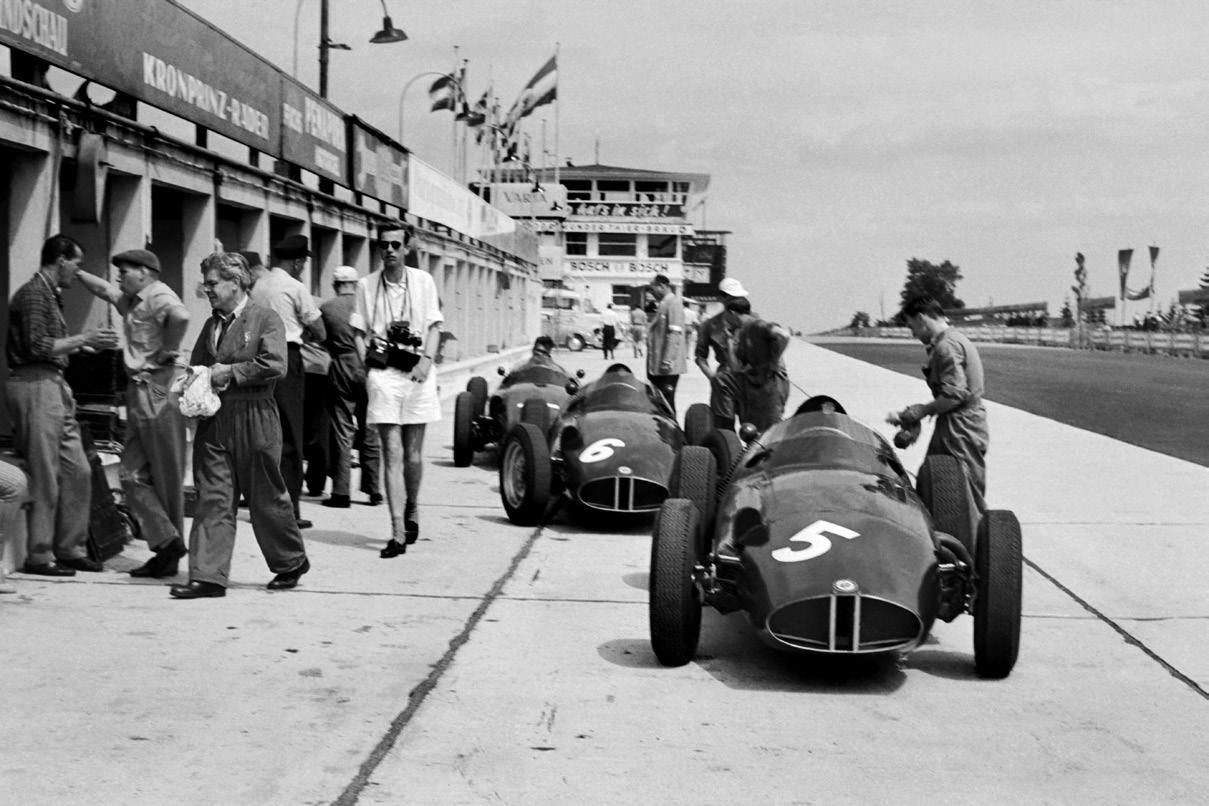

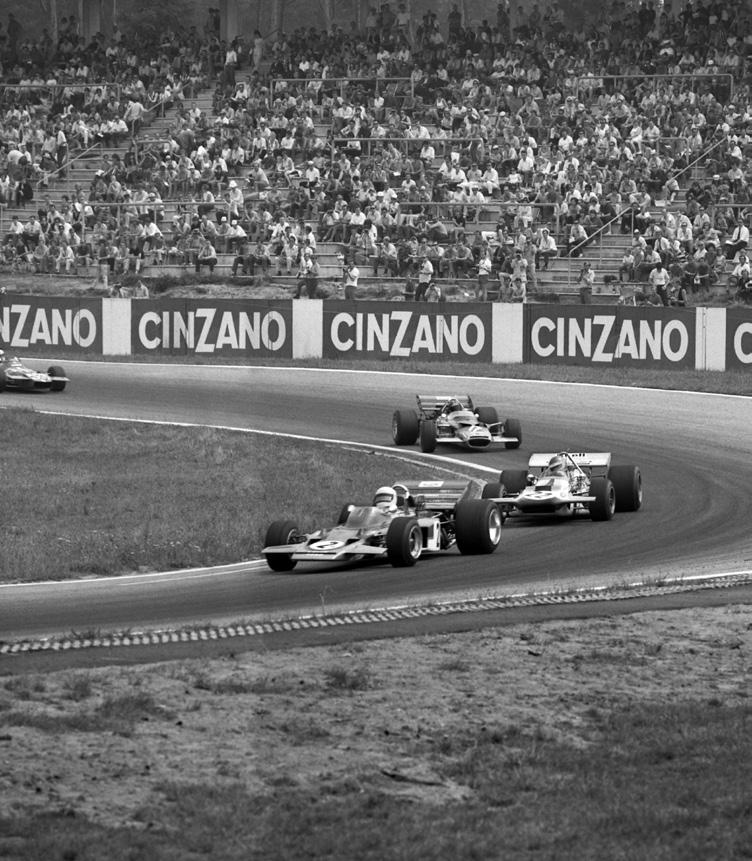
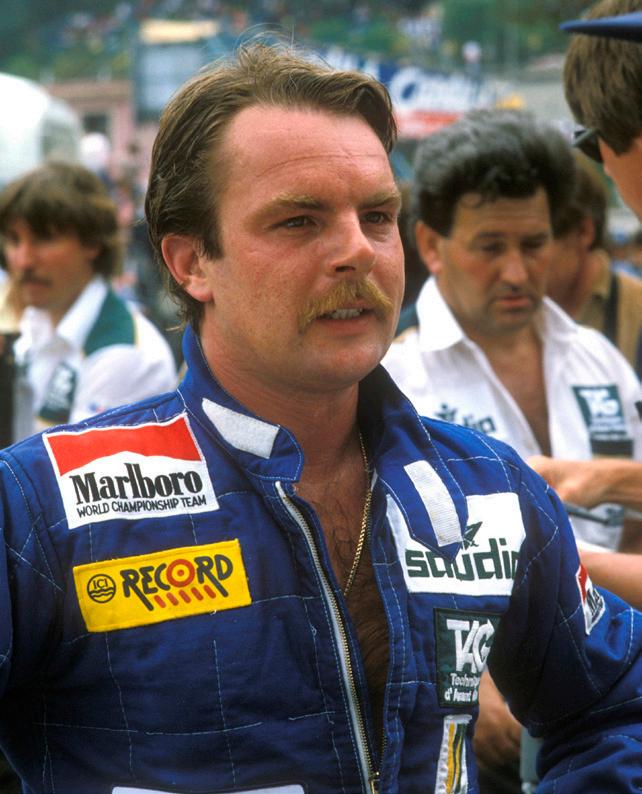
70’s p. 134
80’s p. 194


10’s p. 296
90’s p. 232
00’s p. 264
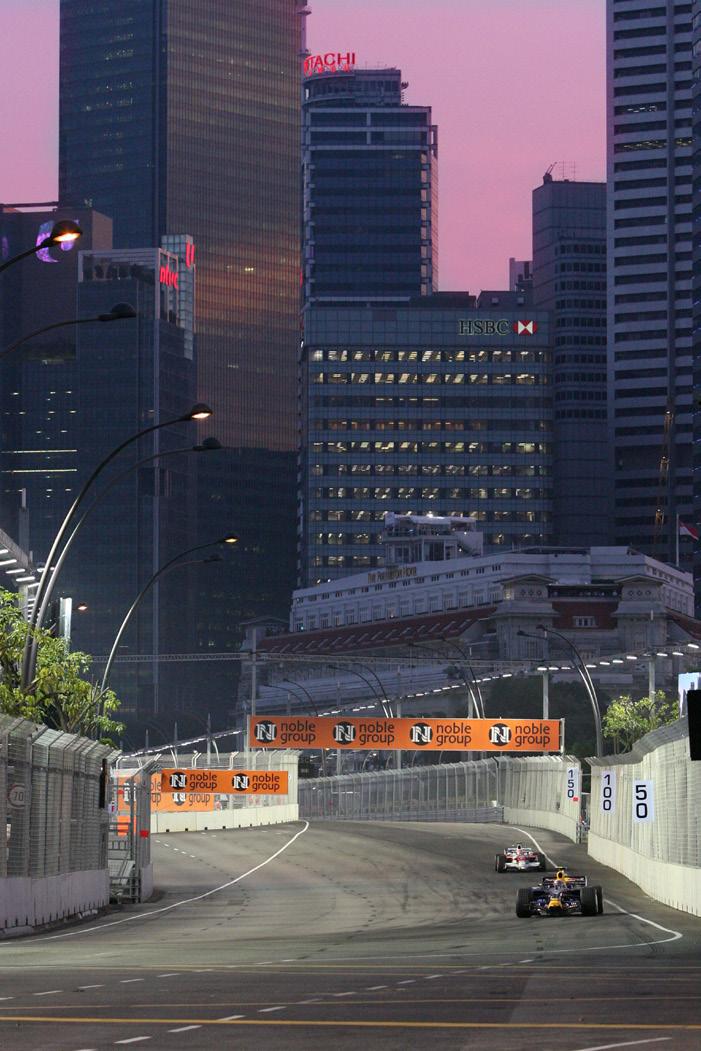

20’s p. 317


50’s p. 005
60’s p. 065




70’s p. 134
80’s p. 194


10’s p. 296
90’s p. 232
00’s p. 264


20’s p. 317

July 31 1954, Nürburgring (Germany)
Mercedes had entered four cars for the 1954 German Grand Prix. But they had five drivers: In addition to Juan Manuel Fangio, Karl Kling, Hans Herrmann and Hermann Lang, a certain Rudolf Uhlenhaut also drove Herrmann's car during practice. Uhlenhaut was the Mercedes team's chief designer, but he did not only develop his ideas on the drawing board – he also tested them in practice. While he never really wanted to become a racing driver, he was certainly both talented and fast behind the wheel. The designer's appearance in Herrmann's car in practice for the German Grand
Prix was just one of many during the 1954 and 1955 seasons. According to the Mercedes archives, during a test at the Nürburgring in 1955, Fangio felt the Mercedes was not quite right. After lunch – a sumptuous affair by all accounts – Uhlenhaut got into the car; still wearing a suit and tie. He then did a lap of the circuit – three seconds faster than Fangio's best time! “He was an extremely competent driver,” Fangio's 1955 teammate Stirling Moss said. “You had to be very sure of yourself before you complained that a car was no good, because he would get into it and show you it was perfectly all right!”
It's debatable which Grand Prix attracted the biggest race day crowd. The 2000 United States Grand Prix, the first race at the Indianapolis road course, had some 250,000 spectators and this is the ‘official record’. But the 1954 German Grand Prix at the Nürburgring probably had an even bigger crowd. It was impossible to control or count the spectators on the 22.8 km long circuit in the Eifel mountains, but at the time it was sug-
gested that close to 400,000 people attended the race.
While there is a question mark behind the biggest race day crowd, there is no doubt which race(s) had the smallest number of spectators: During the COVID-19 pandemic in 2020-21, 17 Grands Prix were held behind closed doorswith no spectators allowed.
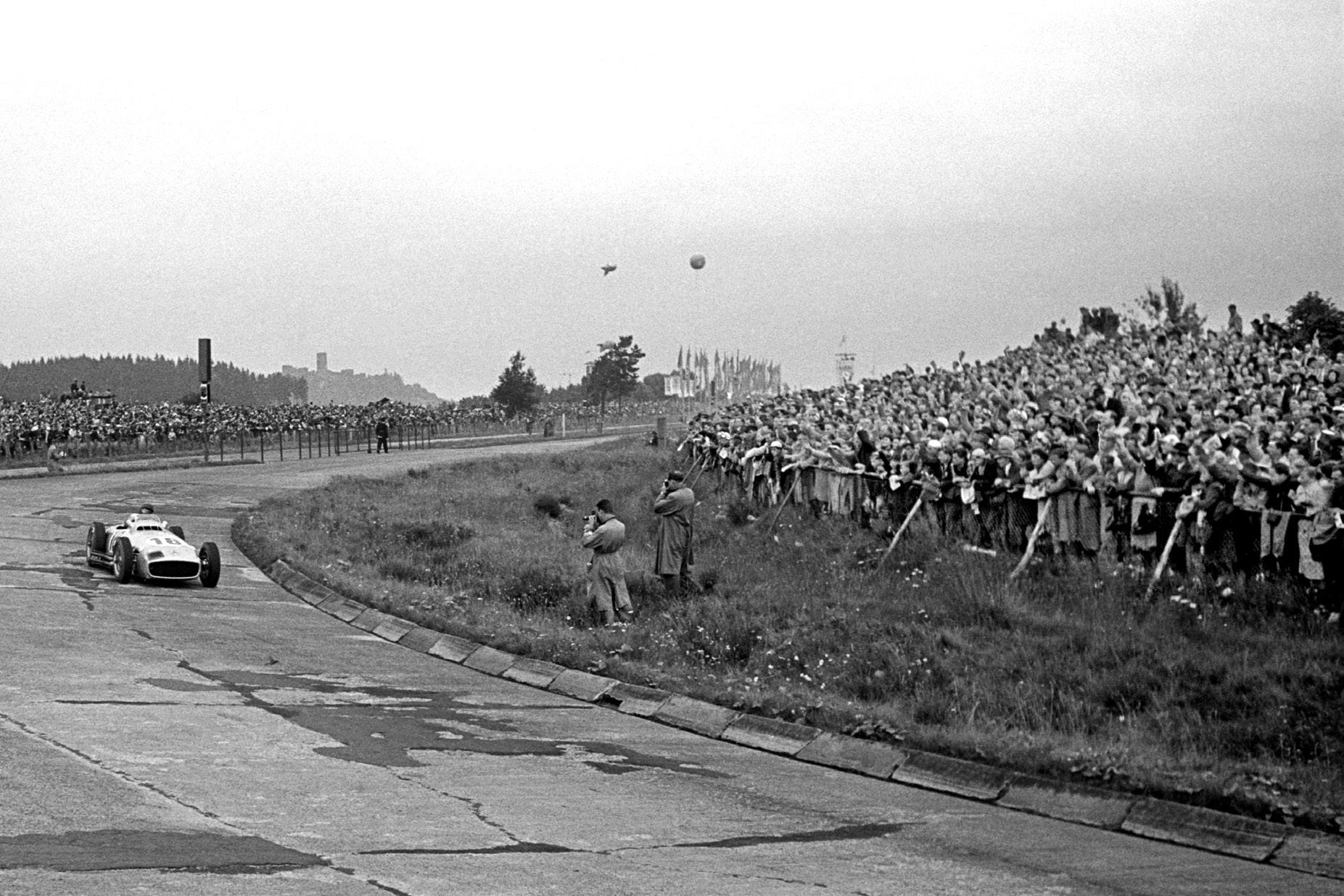

September 2 1956, Monza, (Italy):
For 45 of the 50 laps, Stirling Moss (Maserati) (photo) seemed in total control of the 1956 Italian Grand Prix in Monza.
But he didn't know his fuel tank had developed a small leak, and five laps from the end he ran out of fuel in the Lesmo corner. Luigi Piotti, also in a Maserati, came up behind him, and Moss signalled to the Italian to use his car to push his out-of-fuel car. “He did,” Moss said later. “I was waving him on, faster, faster and we got up to 100 km/h or something and then I waved him on
so he wouldn't get disqualified: All the pits could see was that I pulled in, presumably under my own steam.” The Maserati mechanics quickly put in a few litres of fuel. Moss rejoined the race in second place, but as the leading Luigi Musso (Ferrari) retired a couple of laps later, the Englishman went on to win the race. Protests that Moss had received illegal ‘outside assistance’ were rejected. “I think it was legal,” Moss said. “The rule said: ‘No outside assistance’. Well, now – is a team member an outsider? A fine point.”
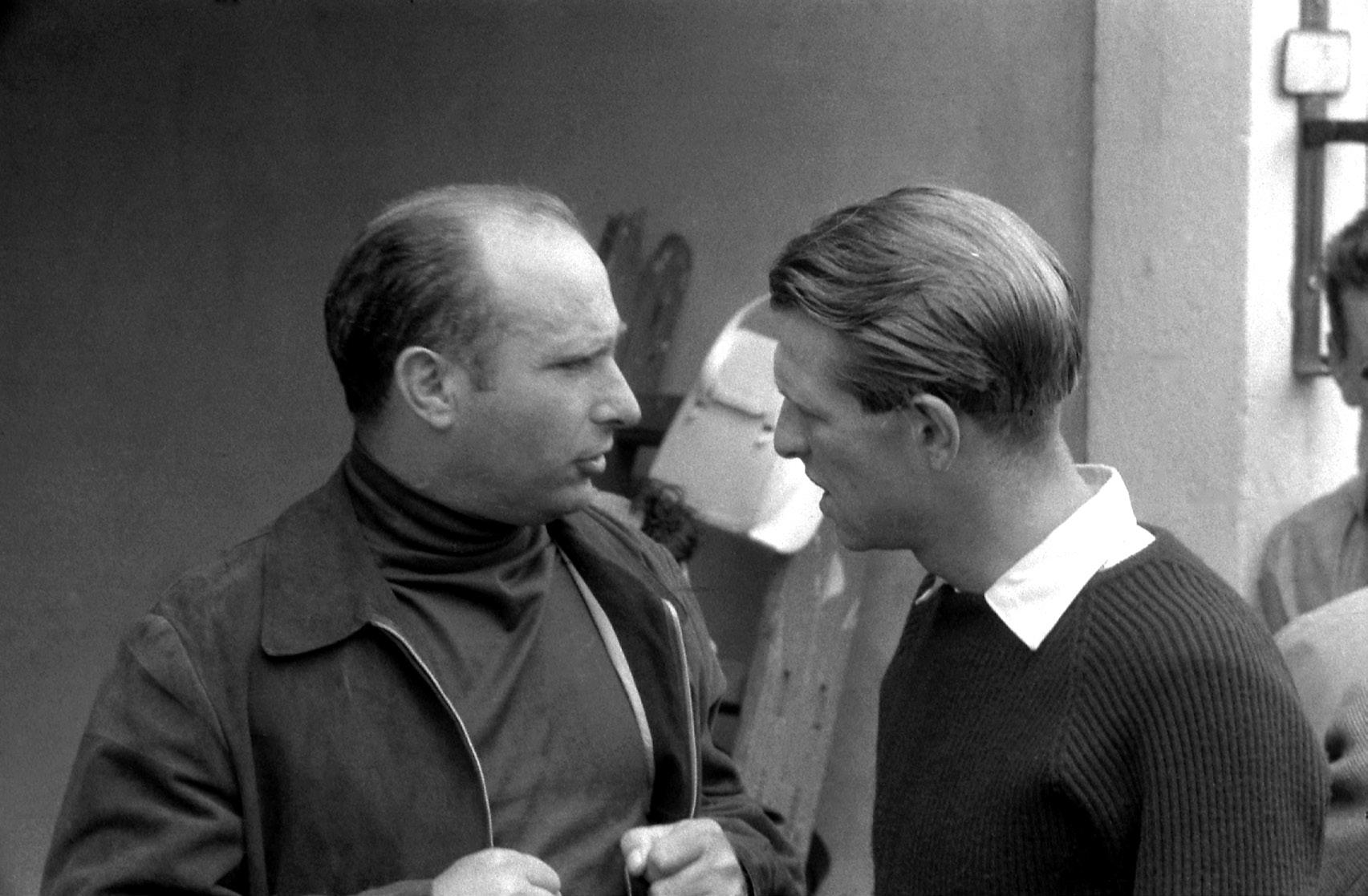
September 2 1956, Monza (Italy)
Juan-Manuel Fangio clinched the 1956 World Championship with second place behind Moss in the Italian Grand Prix. But only after his Ferrari team-mate Peter Collins stopped in the pits and handed over his car to the great Argentine. Before the race in Monza, Fangio led the championship with 30 points. His team-mate Collins had 22 points, and with eight points to the winner and one point for fastest lap, the young Englishman could still take the title. Collins's odds improved considerably when Fangio stopped in the pits shortly after half-distance with a broken steering arm. A resigned Fangio sat at the pit counter while the Ferrari mechanics tried to repair the car, and his title hopes seemed gone, when the third Ferrari driver, local hero Luigi
Musso, came in for a pit stop. The Italian was not in with a chance of winning the World Championship, but still refused to hand over his car to Fangio. A few laps later Collins came into the pits for a tyre change, and saw Fangio on the pit counter, he ignored his own title chances and in a supreme act of sportsmanship handed his car over to the Argentine. With a pat on the back, Fangio thanked Collins, climbed aboard the Ferrari and went on to finish second, which made him World Champion for the third year in a row. Collins, who had already given his car to Fangio in the opening Grand Prix of the 1956 season in Monaco, was happy to help his 45-year-old team-mate. “I am perfectly happy to wait for another year,” the 24-years old Englishman said.
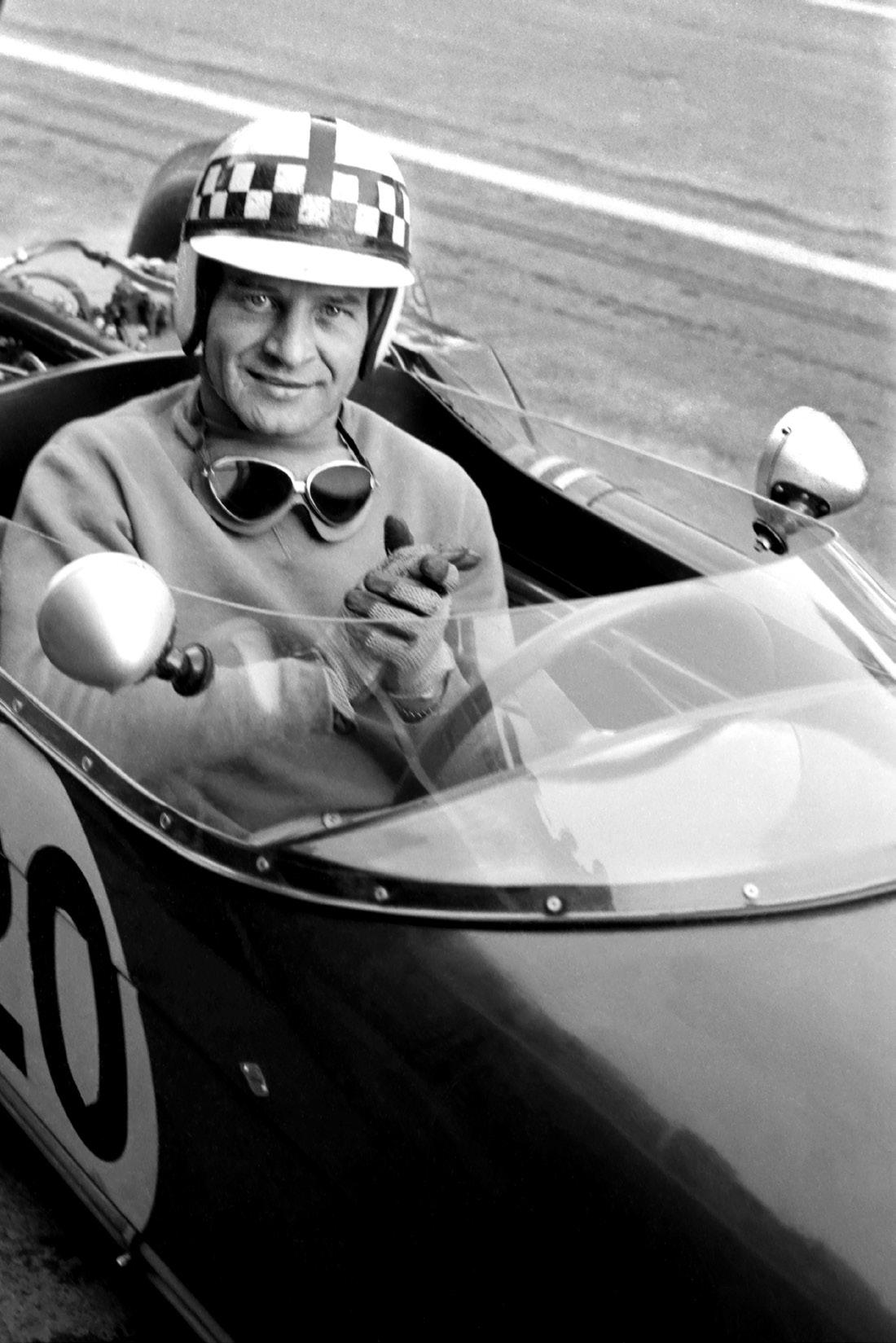
May 31 1959, Zandvoort (Holland)
Scotland's Innes Ireland made his debut in the Formula 1 World Championship as a Lotus works driver in the 1959 Dutch Grand Prix at Zandvoort. He found the Lotus somewhat difficult to handle in qualifying, and his teammate, the more experienced Graham Hill, drove it for a few laps. The timekeepers never realised that it was Hill and not Ireland in the number 12 Lotus, and when the grid was published, Ireland was ninth on the grid – with a time set by his teammate (who qualified his own car fifth). For obvious reasons, Ireland did not complain. He made a great start and eventually finished his first Grand Prix in a strong fourth place.

July 5 1959, Reims (France)
Ferrari driver Jean Behra was fired from the Ferrari team when he knocked out team manager Romolo Tavoni after the 1959 French Grand Prix in Reims. Behra, who was in his first season with the Scuderia, had qualified fifth for his home Grand Prix, but was delayed at the start. Charging through the field, it was clear he was hard on the Ferrari. At half-distance he was up to third and on lap 28 he equalled the lap record. But the effort had been too much for the Ferrari, and a trail of blue smoke began to emerge from the engine. After 31 of the 50 laps it was all over and Behra had to retire with a holed piston. From the telltale needle on the rev counter, Ferrari team manager Romolo Tavoni could see how Behra had abused the car. Heated words were exchanged, and the discussion continued after the prize-giving. It only finished when Behra felled Tavoni with a single punch. The agitated Frenchman had to be pulled away from the scene by his wife, and he was sacked as soon as Tavoni came round.
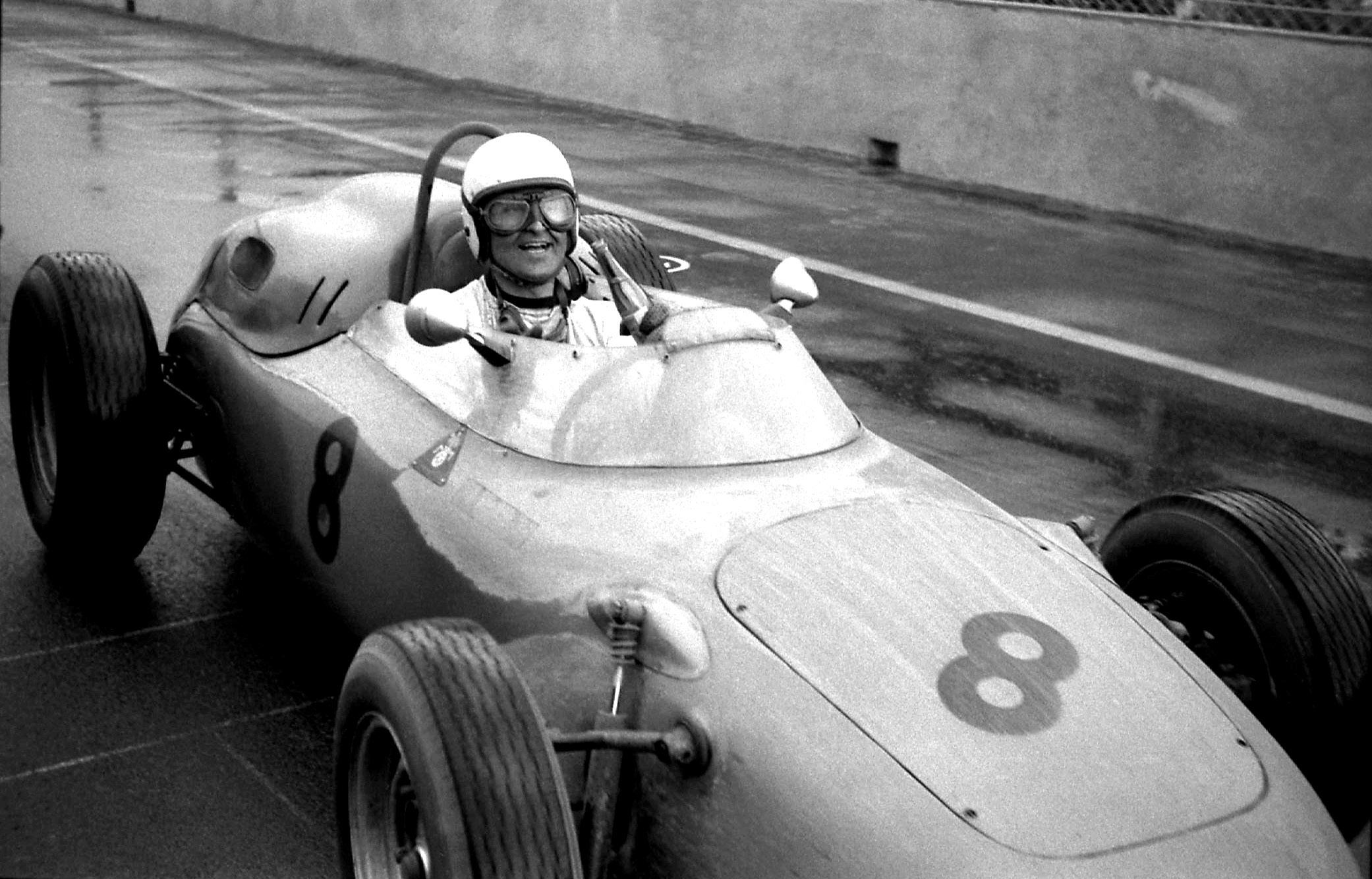
May 20 1962, Zandvoort (Holland)
Dutch nobleman Carel Godin de Beaufort was one of the most colourful F1 drivers of the early 1960s. The Porsche privateer often raced with a shirt and tie under his overalls – but never with shoes! Officially the stockinged feet would give him a better feel for the pedals – in reality there was simply no room for his Size 13 shoes (48 in European sizes) in the Porsche!

June 17 1962,
Spa-Francorchamps (Belgium)
Trevor Taylor (Lotus-Climax) and Willy Mairesse (Ferrari) were fighting hard over second place in the 1962 Belgian Grand Prix. “It was a real ding-dong,” Taylor would recall later. “The gearchange on the Lotus came out through the back, and he came up with the snout of the Ferrari and inadvertently touched the linkage.” That put the Lotus into neutral, and Taylor lost control. Mairesse, pushing on, came through on the inside, and hit the out-of-control Lotus again. “It saved
my life,” Taylor said. “It straightened my car up slightly and I shot down a ditch. If Mairesse hadn't hit me a second time, I would have gone straight into a bank.” Taylor escaped shaken but unhurt while the Ferrari flew, knocked down a telegraph pole and caught fire. Mairesse managed to crawl from under the burning Ferrari, but then spent several weeks in hospital recovering. The accident kept him out of Formula 1 for three months.
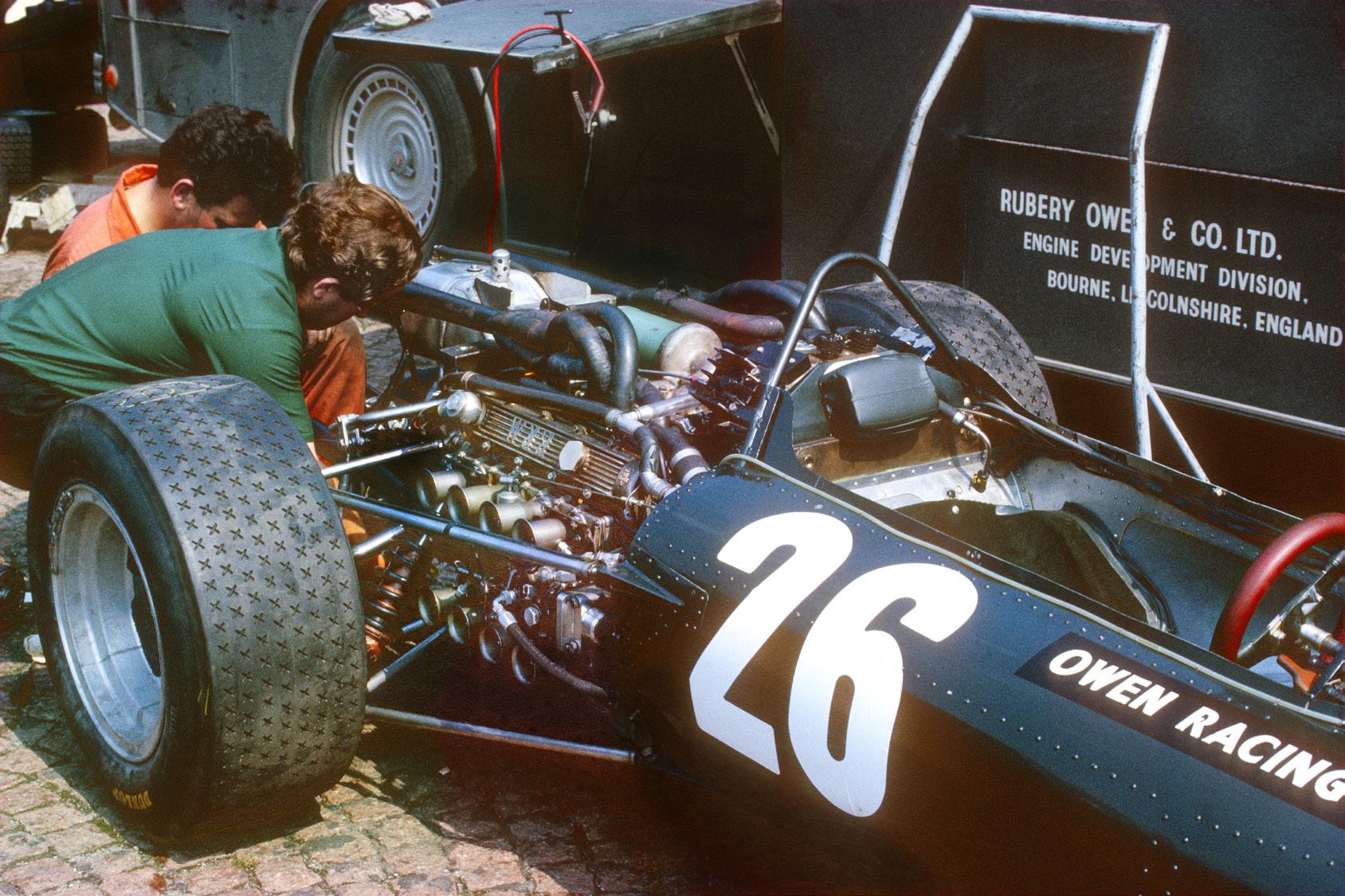
September 4 1966, Monza (Italy)
The British BRM team had been very successful in the 1.5-litre formula between 1961 and 1965 with Graham Hill winning the 1962 title and finishing runner-up in 1963, 1964 and 1965. When the new 3.0-litre formula was introduced in 1966, BRM decided to create a new engine by linking two of their successful 1.5-litre V8 engines on their sides, bottom end to bottom end, linked by the crankshaft. This created a 3.0-litre H16. By carrying over most of the components, the H16 was in some ways a simple solution. But it also created an enormous monster of an engine, which was both complicated and heavy. With the H16 the BRMs were more than 120 kgs heavier than the opposition. The H16 engine made its debut in the 1966 Italian Grand Prix with Graham
Hill and Jackie Stewart driving the BRMs. They both retired from the race – and both BRM drivers also retired from the remaining two Grands Prix of the season. Things did not really improve in 1967, but the BRM H16 did actually win a race: Lotus was waiting for Ford's new V8 Cosworth, in 1966 and early 1967 and opted to use the BRM engine and Jim Clark won the 1966 United States Grand Prix in a Lotus-BRM, on a day when most of the frontrunners retired. The H16 was quietly forgotten after the 1967 season: it was too big, too heavy, too thirsty and too complicated.
“It would have been better used as a ship's anchor than as a F1 power plant,” is how Jackie Stewart remembers the BRM H16.

September 4 1966, Monza (Italy)
The 1966 Italian Grand Prix at Monza got off to a hot start. Mike Parkes had qualified in pole position, but it was his Ferrari teammate Lorenzo Bandini who led the first lap. Parkes took the lead on lap two but on lap three it was John Surtees (Cooper-Maserati) who crossed the line in first place. The fourth lap saw the fourth leader with Jack Brabham (Brabham-Repco) in front. But none of the four early leaders won the race: After 68 laps it was Ferrari's Lodovico Scarfiotti (photo) who took a popular home win.

July 30 1975, Nürburgring (Germany)
Hill-Ford driver Alan Jones was keen to learn the almost 23 kilometres and countless corners of the Nürburgring Nordschleife before his debut at the famous circuit in the 1975 German Grand Prix. He hired a BMW road car and started his learning process, doing lap after lap. For a long time, all went well, but then he lost control of the BMW and hit the armco – hard.
The car was badly damaged, and he later said that his first thought was: “Bloody hell – it's a hired car – what do I do here?” He pushed the BMW into a gap in the armco, and quietly disappeared. When dusk fell,
he went back to the scene with colleagues James Hunt and Mark Donohue. They managed to get the car out of the Nordschleife and back onto the public roads. “The thing was crabbing like you wouldn't believe it,” Jones said later. About 20 kilometres from the track, he phoned the hire car company, and told them he had crashed as he swerved to miss a deer. They came with a new car, and the quick-thinking Aussie was on his way again. On Sunday he scored his first World Championship points with a fine fifth place. Somehow, those laps in the hire car paid off…
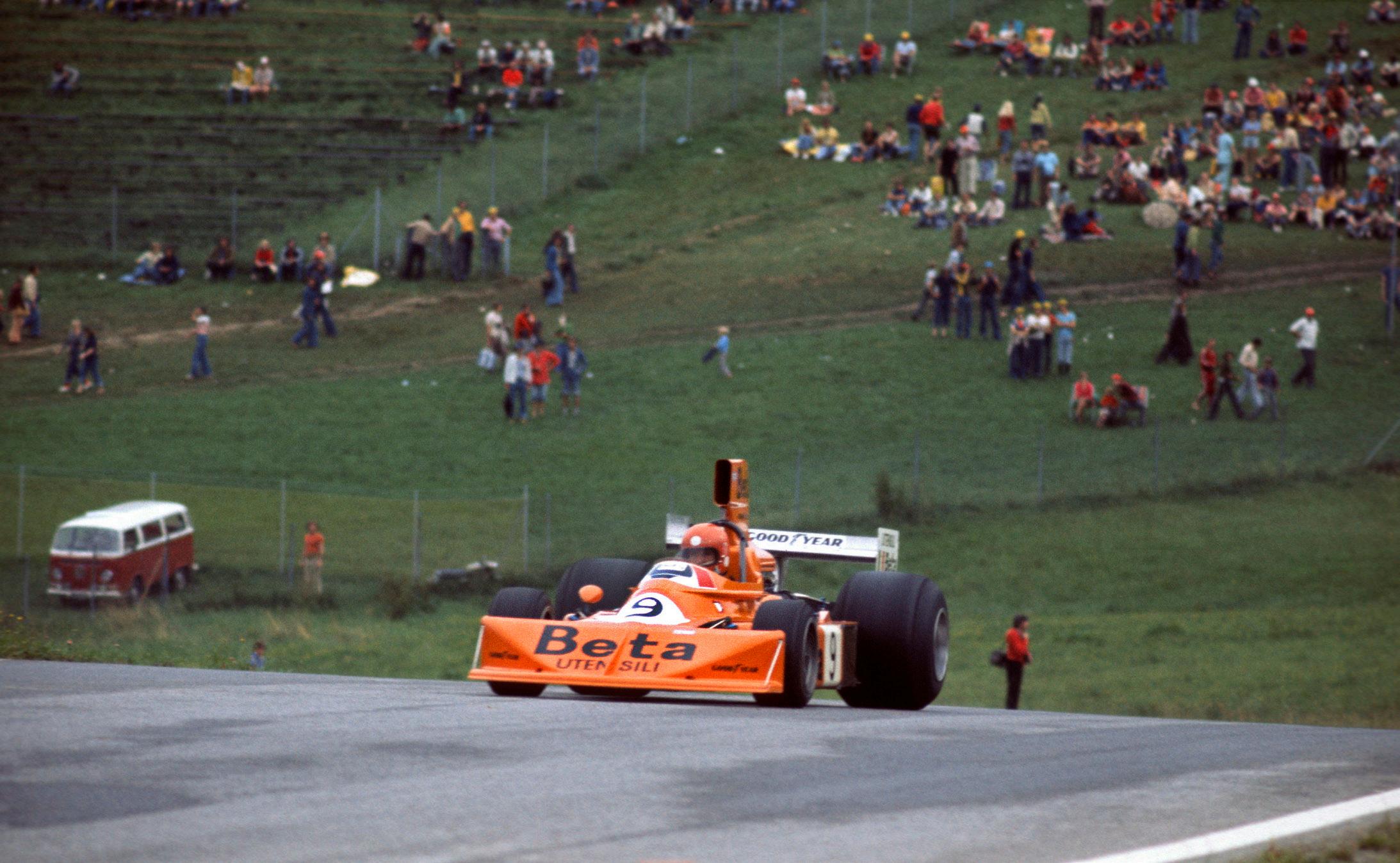
August 17 1975, Österreichring (Austria)
Vittorio Brambilla was one of the most colourful drivers of the mid-1970s and his nickname ‘The Gorilla from Monza’ not only referred to his looks and hometown – it also had something to do with his aggressive driving style, which saw him crash far more often than his competitors. He started eighth in the wet 1975 Austrian Grand Prix, and most people expected him to crash
sooner rather than later. But for once, the ‘Gorilla’ kept his orange March on the track, and drove a beautiful race, setting the fastest lap in the process. Coming up to the chequered flag and his first and only Grand Prix win, he took a hand off the steering wheel to wave to the crowd. He lost control, passed the finish line sideways and hit the armco a few metres later.
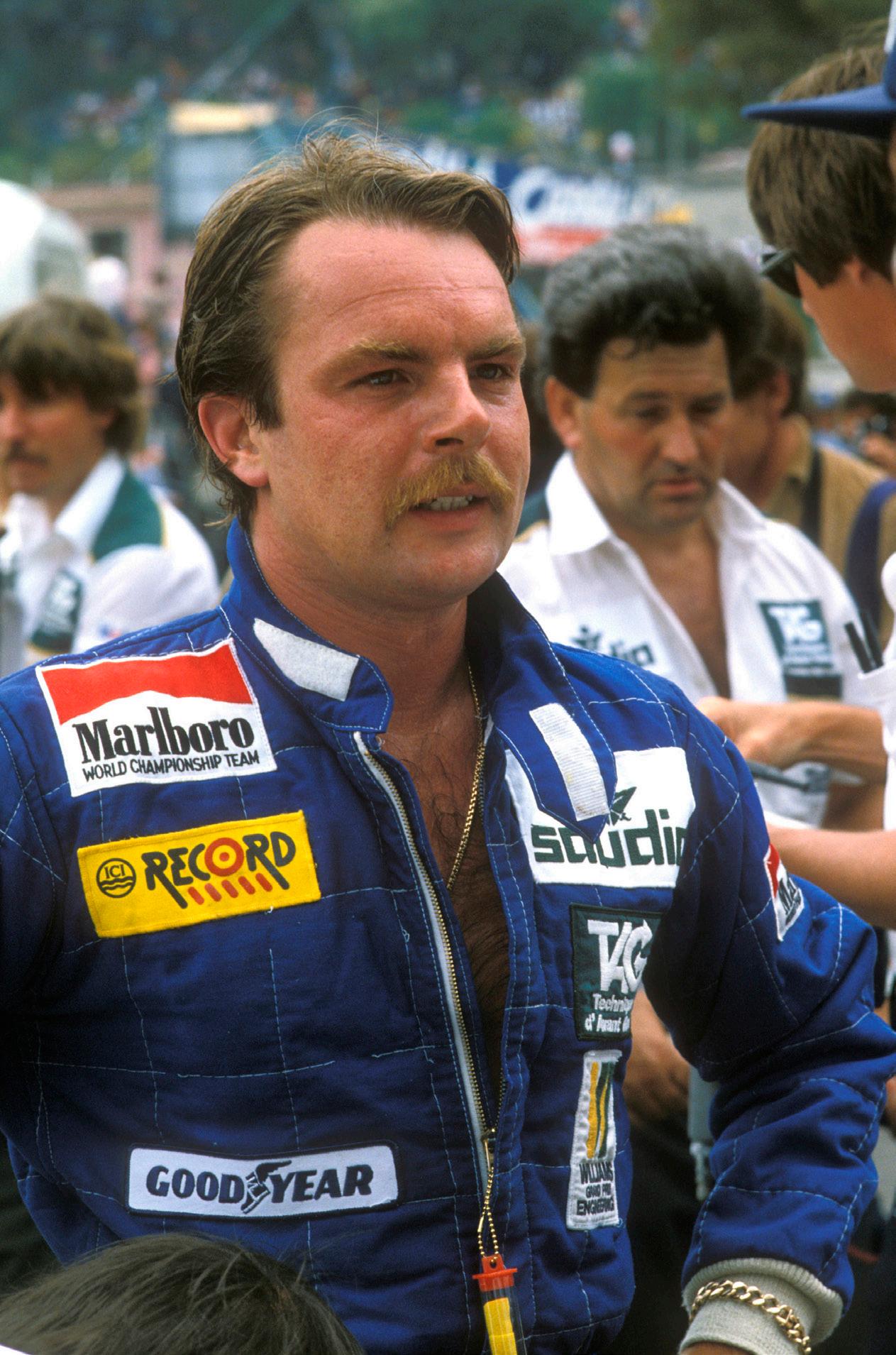
September 25 1982, Las Vegas (United States)
When Keke Rosberg (Williams-Ford) crossed the line in the 1982 Caesars Palace Grand Prix in Las Vegas in fifth place, it was enough to clinch the 1982 World Championship. Even more remarkable was the fact the Finn had only won one Grand Prix in his F1 career! Rosberg had won the Swiss Grand Prix in Dijon earlier that year, but in a season with 11 different winners, consistency was paramount, and the Finn scored points in 10 of the 15 races. Keke Rosberg, father of 2016 World Champion Nico, went on to win another four Grands Prix before he retired from F1 in 1986. With only one win, Keke Rosberg took the 1982 World Championship after winning 6.6% of the races. Max Verstappen (Red Bull-Honda) took the 2023 title by winning 19 of the 22 races – that is a staggering 86.4%!
After 16 years with the normally-aspirated Ford Cosworth V8 engine, Lotus would make the switch for Renault’s turbocharged V6 engine in 1983. But Renault did not have a sufficient number of engines available, and while Elio de Angelis (photo) was destined to start the season with Renault engines, his teammate Nigel Mansell would remain Ford powered until mid-season. Lotus’s Renault collaboration started badly when the engine in de Angelis’s car began
to smoke during the warm-up lap before the opening race in Brazil. The Italian was quickly crammed into the spare car – which had a Ford Cosworth engine. De Angelis went on to finish 13th in the race but was later disqualified. While it was OK to take the spare car in those days, it was not allowed to race in a different type of car. And a Lotus-Ford was definitely different from a Lotus-Renault.
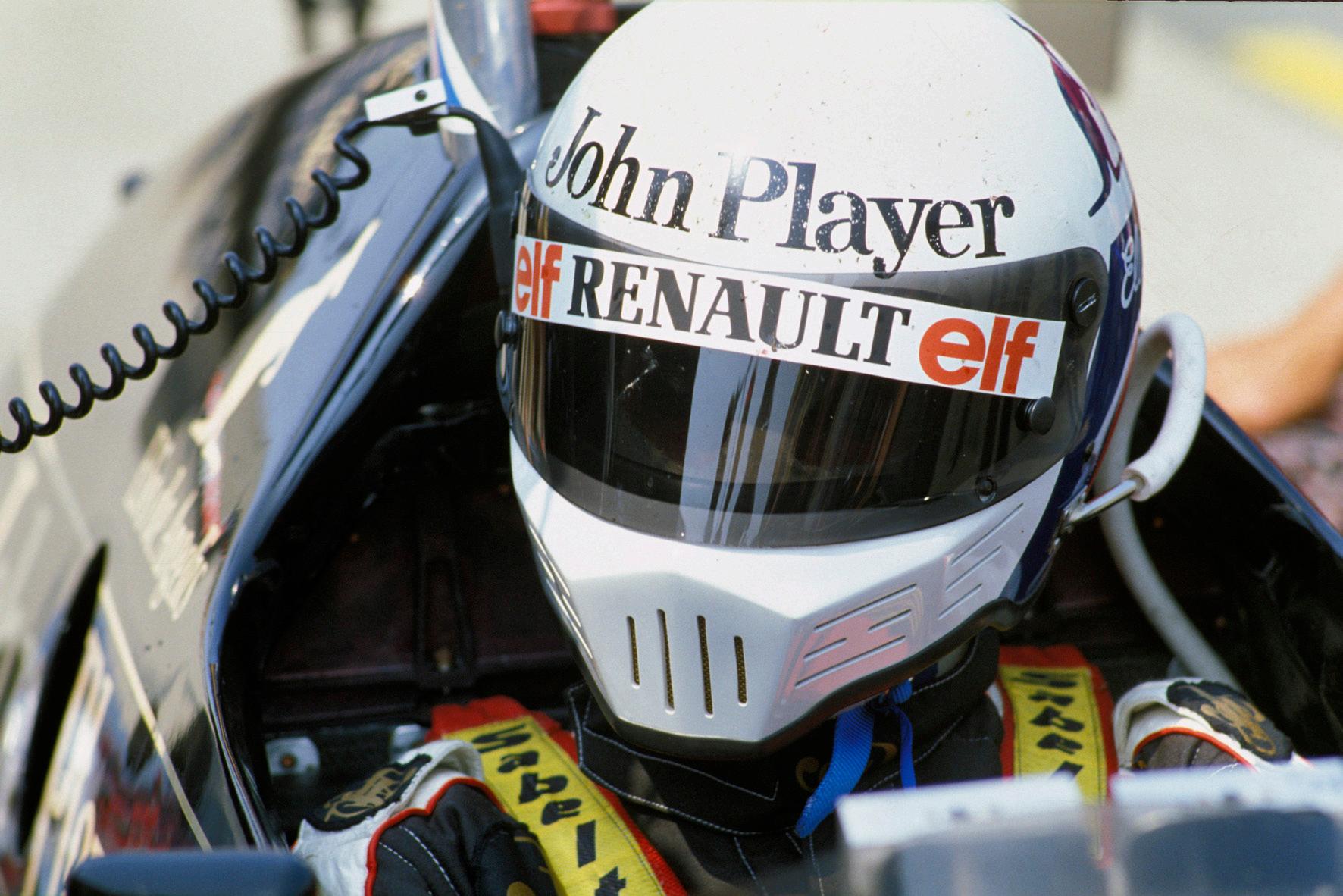
June 1 2003, Monte Carlo (Monaco)
Overtaking is notoriously difficult in Monte Carlo – that's a fact. But a race with absolutely no overtakes? That was what happened in the 2003 Monaco Grand Prix. It was the first of only two races with no overtakes in the history of the FIA Formula 1 World Championship (the other being the 2009 European Grand Prix in Valencia), but it was still an interesting afternoon. And the lead actually changed a few times, but only when the leaders pitted. Ralf Schumacher (Williams-BMW)
took the lead from pole (photo), and his teammate Juan-Pablo Montoya, Kimi Raikkonen (McLaren-Mercedes), Jarno Trulli (Renault) and Michael Schumacher (Ferrari) also took turns in the lead. At the chequered flag, race winner Montoya and Raikkonen and Schumacher in second and third place were covered by less than two seconds. The 2003 Monaco Grand Prix was one of the better races in the principality – even with no overtaking whatsoever.
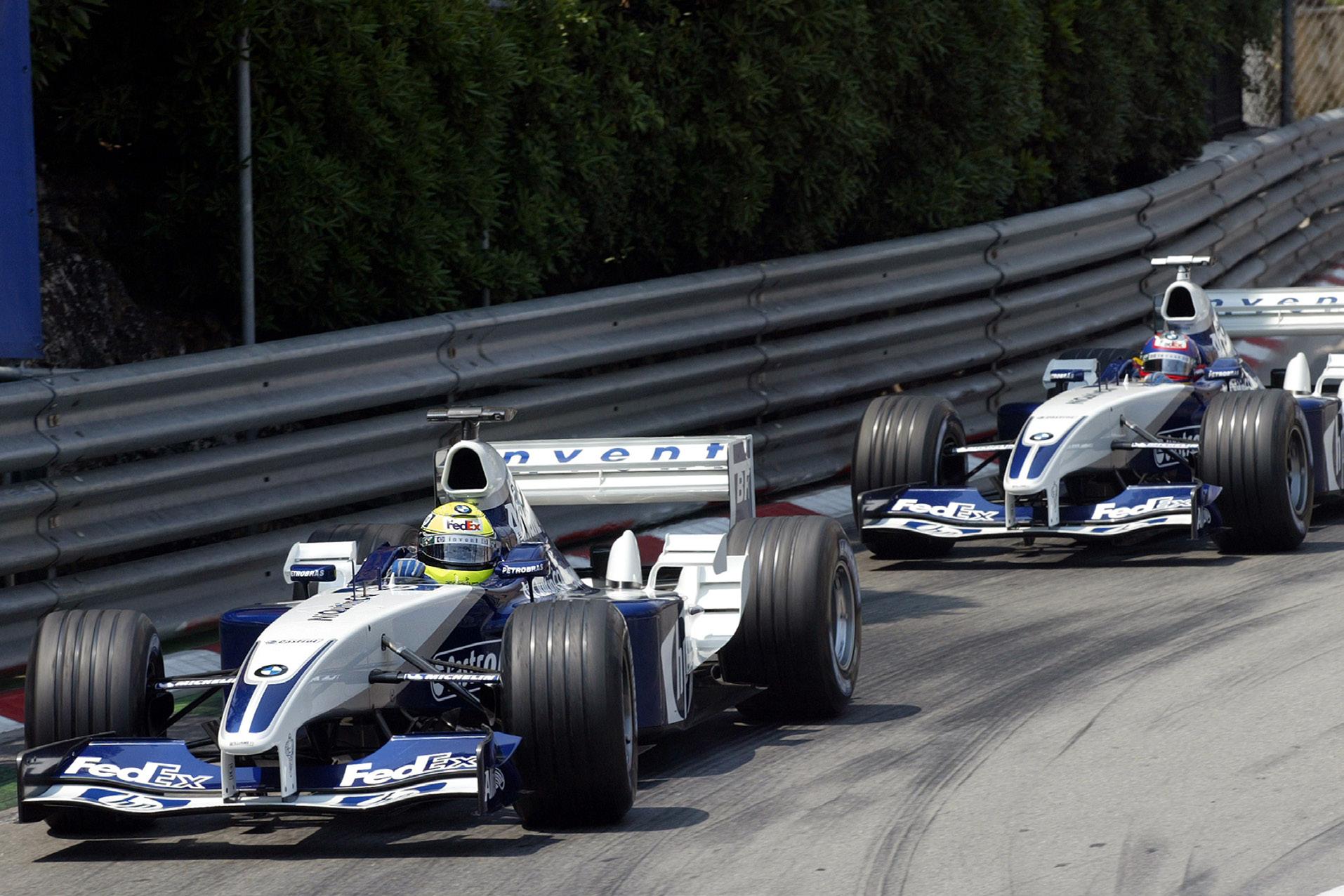

October 12 2003, Suzuka, Japan
Formula 1 history is filled with sponsors who didn't pay the teams as expected. The usual reaction from the team is to remove the sponsor's name from the car and take them to court.
In 2003 the owner of the Minardi team Paul Stoddard adopted a different approach when the company Stayer defaulted on the agreed payments. When another cheque bounced, he kept the name on the car - but with a ‘Not Paid’ sticker on top of it…

August 29 2021, Spa-Francorchamps (Belgium
The 2021 Belgian Grand Prix was planned to begin at 15.00 and run for 44 laps. Persistent rain meant the start was delayed several times but with dusk approaching, it eventually started at 18.17 behind a Safety Car (photo). Three laps behind the Safety Car were completed before the race was red-flagged.
According to the F1 regulations, the results must be taken two laps before the red flag and the official distance of the race was therefore
just one lap. With no overtaking allowed behind the Safety Car, the grid positions determined the result with Max Verstappen (Red Bull-Honda) winning in front of George Russell (Williams-Mercedes) and Lewis Hamilton (Mercedes). This is the shortest race in the history of the Formula 1 World Championship, and as less than 75% of the scheduled race distance was completed, only half points were awarded.
25 2022,
An Aramco oil depot some 15 kms from the Jeddah Corniche Circuit was attacked by drones and missiles from Yemen's Houthi rebels during the first day of practice for the 2022 Saudi Arabian Grand Prix. There was black smoke from the large fire on the horizon, and the FP2 session was delayed by 15 minutes to allow for an emergency meeting between the Formula 1 CEO Stefano Domenicali, the team principals and the drivers. After the meeting, it was announced that the event would continue as planned. Later that evening it took another meeting lasting almost five hours for the local organisers to convince the drivers that they would be safe for the rest of the weekend. Saturday's practice and qualifying and Sunday's race went ahead without further attacks.

The Alternative F1 History
Copyright © Helmin & Sorgenfri, 2025
Text: Peter Nygaard
Photos: Peter Nygaard
Editor: Jesper Helmin
Layout: Pallas Group
ISBN: 9788794190367
1. edition, 1. circulation Printed at GPS Group, 2025
Helmin & Sorgenfri Nivå Strandpark 21 DK-2990 Nivå Denmark www.helminsorgenfri.dk